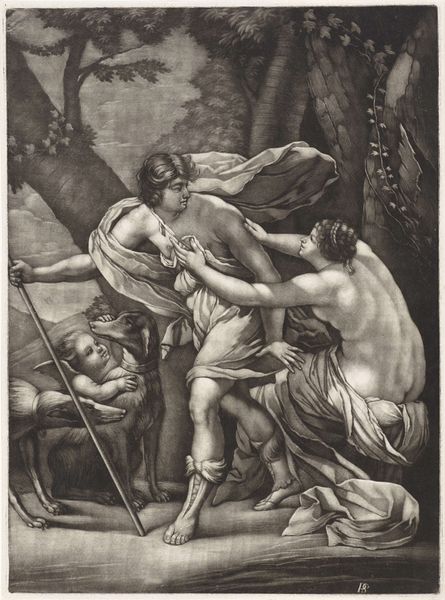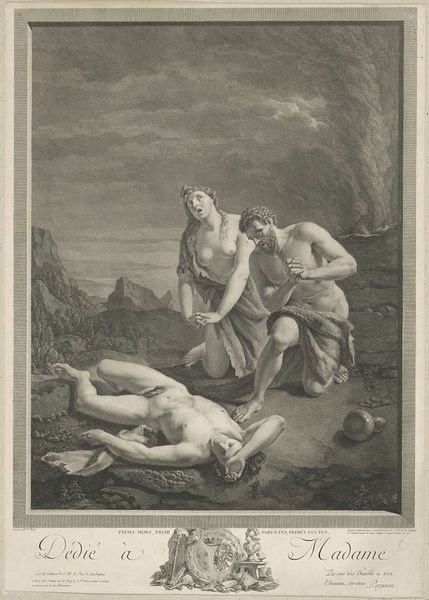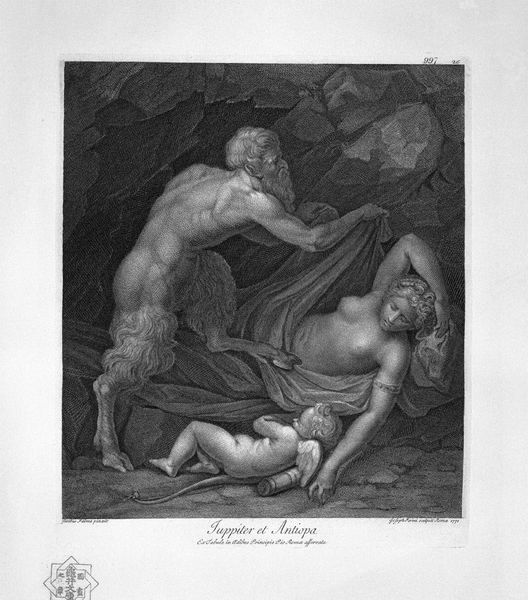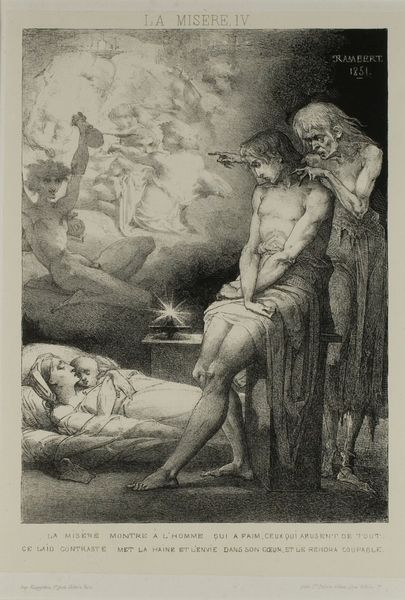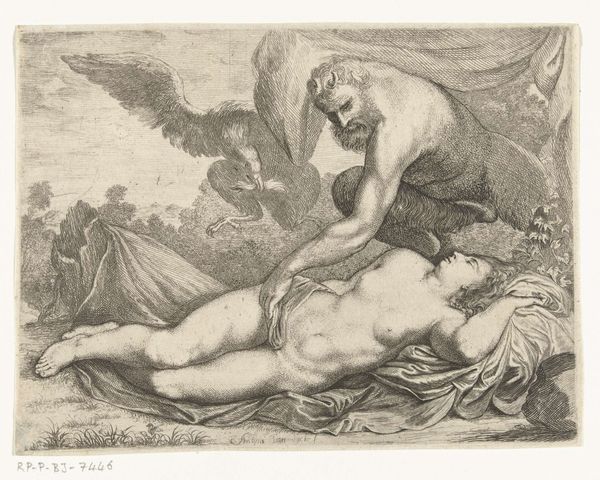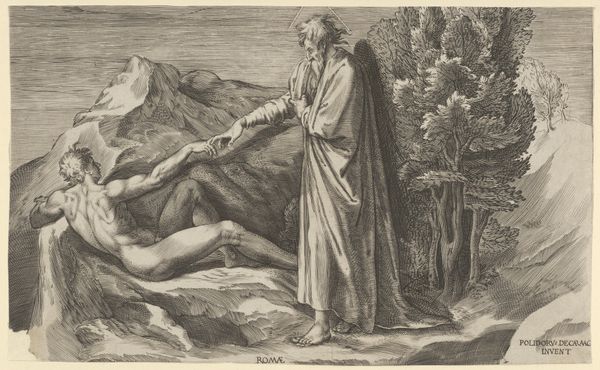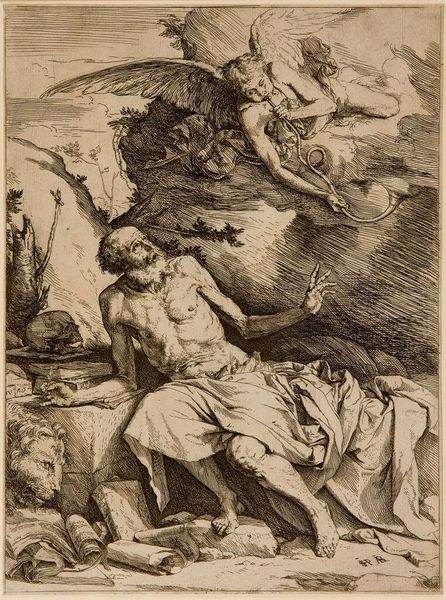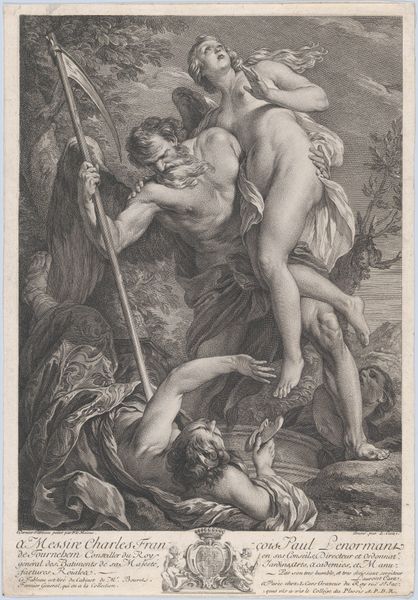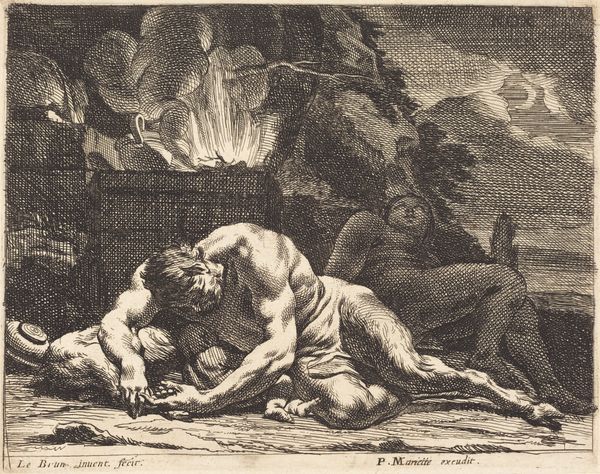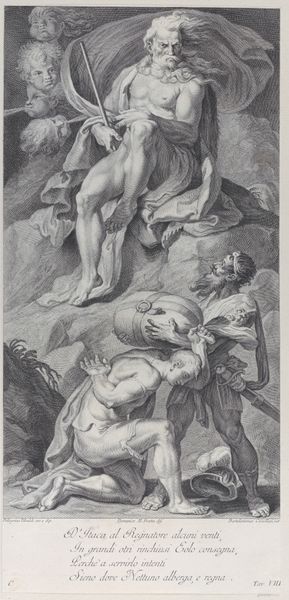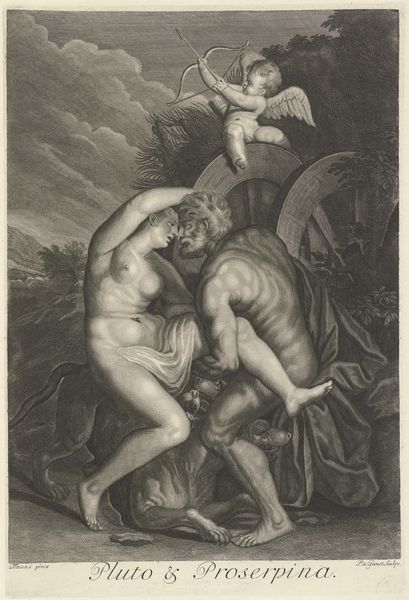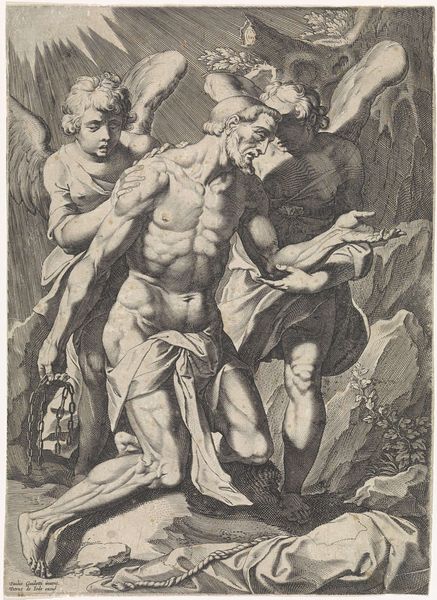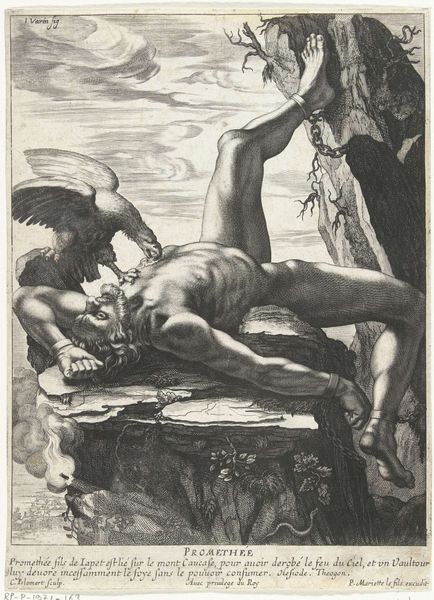
Dimensions: height 286 mm, width 239 mm
Copyright: Rijks Museum: Open Domain
Curator: Looking at this engraving, titled "Jupiter en Antiope" created in 1770 by Giuseppe Sforza Perini, it evokes such a sense of clandestine observation, wouldn't you agree? Editor: Absolutely, the composition has a voyeuristic quality. The sleeping Antiope, the leering satyr, even the little cupid adds to the sensuality. It's quite stark, though. Very baroque in its drama. Curator: It certainly plays with established visual codes. Take the figure of Jupiter, rendered here as a satyr rather than in his usual divine form. It seems to hint at a darker reading of the myth. Notice his goat-like features juxtaposed with the smoothness of Antiope's skin. He is both familiar and unnerving. What meanings might be embedded there? Editor: Yes, there's definitely an intent to disrupt expectations. This piece could be seen within the broader context of 18th-century prints, which often used classical mythology to address contemporary social and political issues. Do you think that applies to this artwork? Curator: I suspect so. The iconography subverts Jupiter, a symbol of authority, suggesting critiques of power. Antiope, vulnerable and exposed, could represent societal innocence exploited. The visual symbols imply cultural critique, where the sleeping figure can be perceived as unaware, defenseless, and at risk. The artist deliberately created a work full of emotional complexity. Editor: You're right. If we consider the socio-political currents of 1770, critiques of aristocratic privilege were gaining momentum. Displaying Jupiter as a satyr emphasizes the baseness and predatory behavior associated with unchecked power, right? Even the print medium itself—affordable and reproducible—contributed to democratizing access to subversive imagery. Curator: Precisely, and it goes to show how a seemingly straightforward depiction of classical myth could carry a powerful, layered commentary. It reminds me again how visual language encodes cultural memory. Editor: Agreed. Reflecting on this print offers insight not only into artistic style but into the cultural values, beliefs, and even anxieties prevalent at the time. A really worthwhile analysis.
Comments
No comments
Be the first to comment and join the conversation on the ultimate creative platform.
